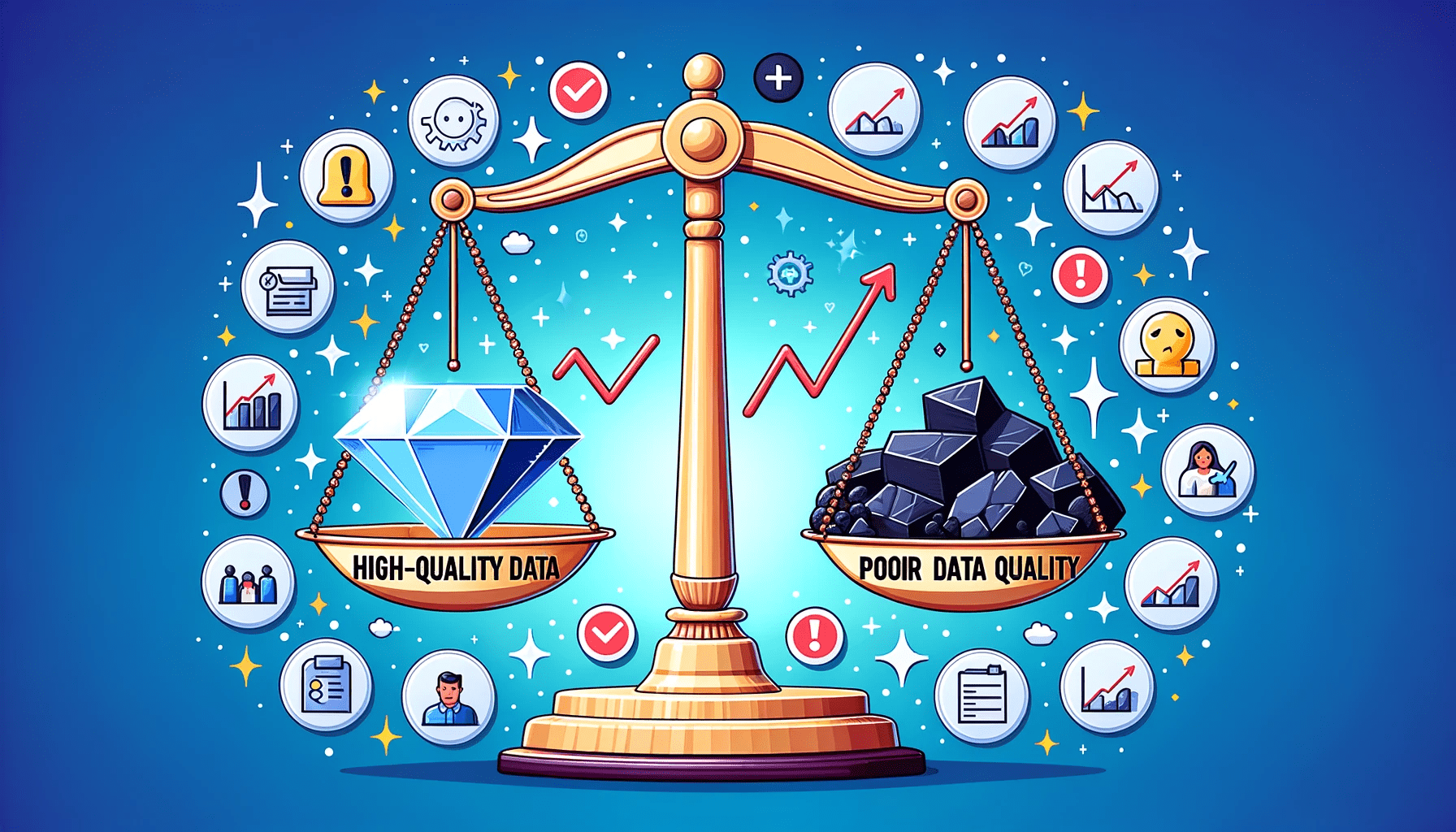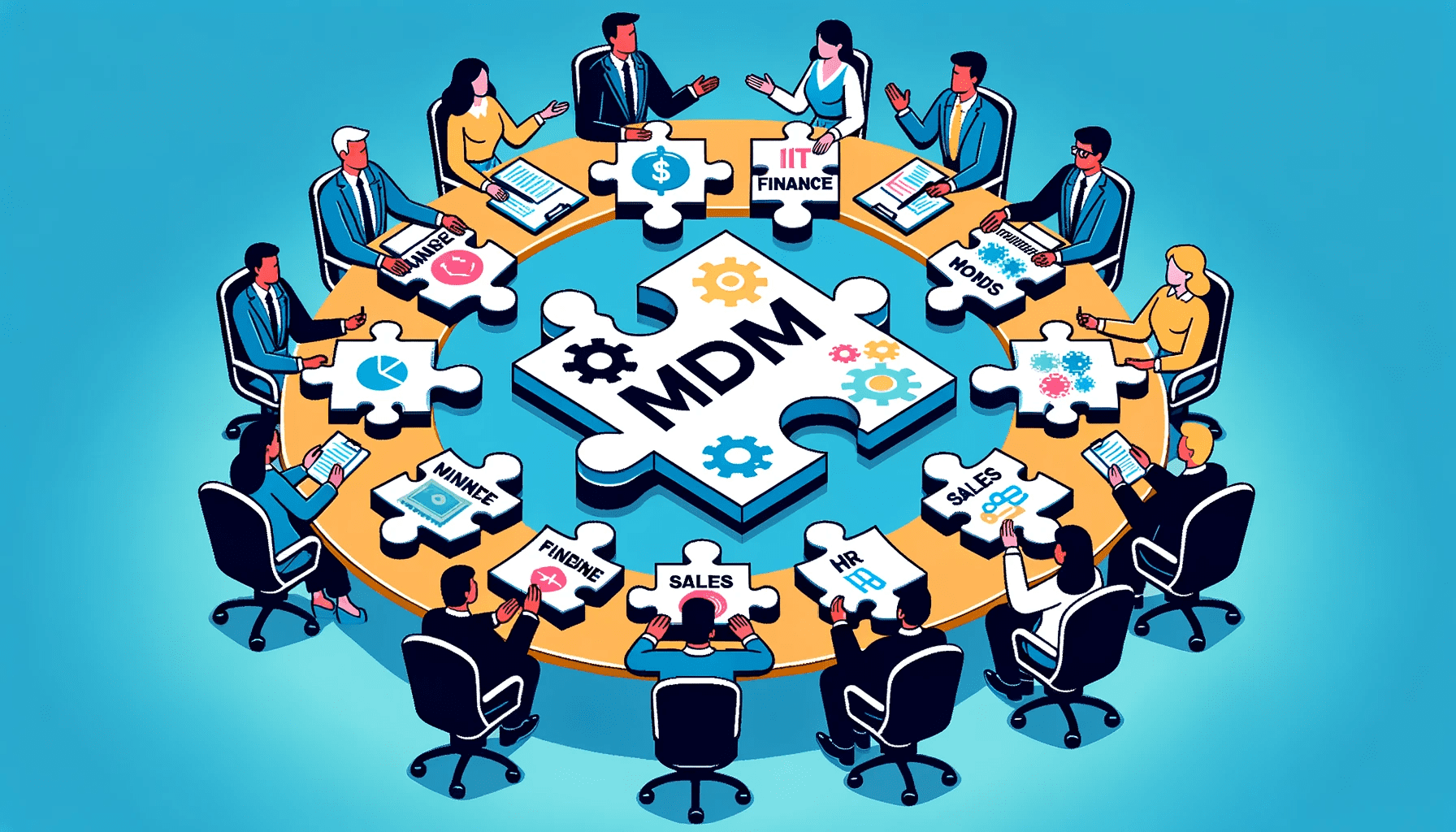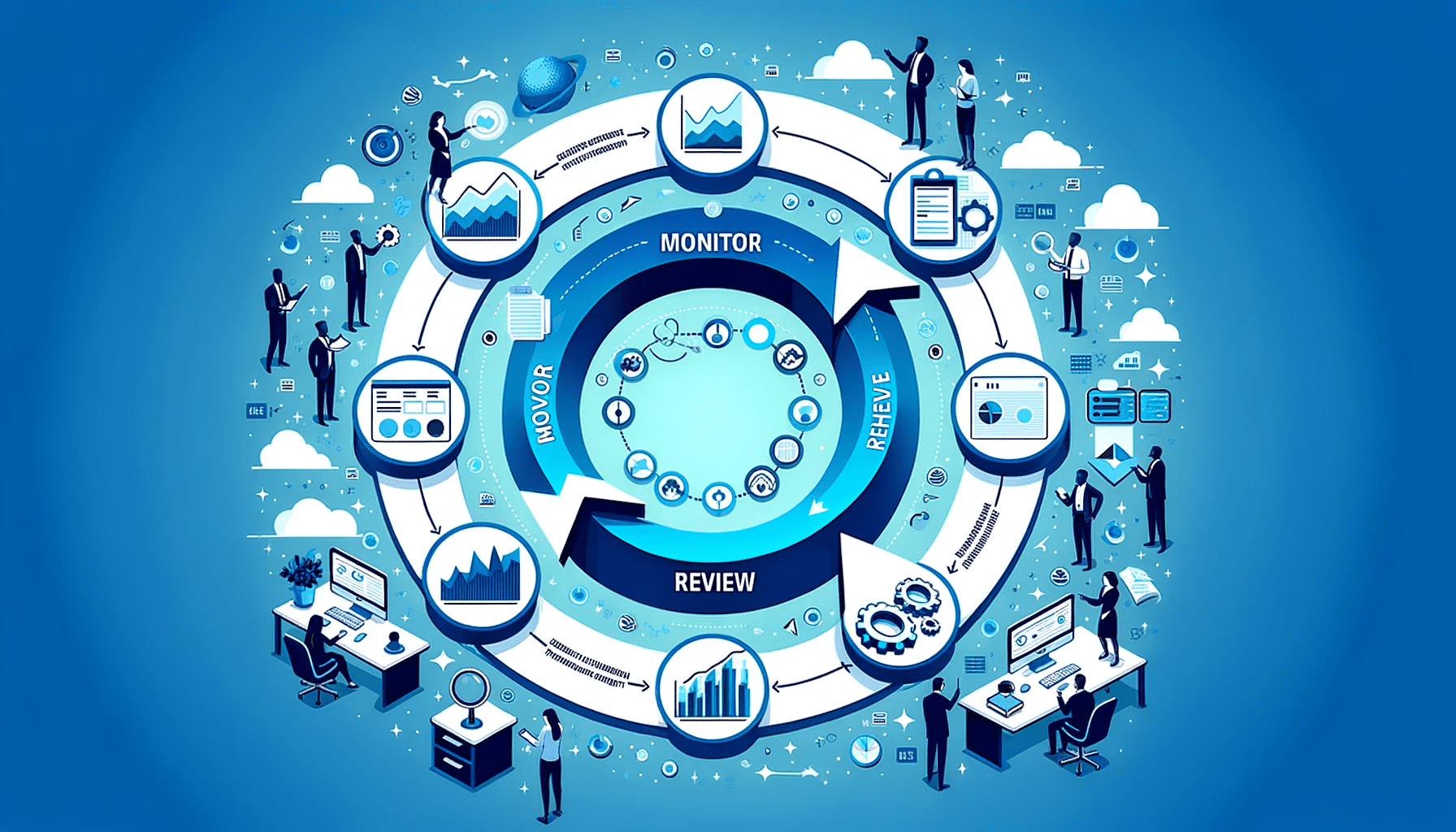Guide | 15 min read
Modern MDM Best Practices:
A Guide to Implementing a Master Data Management strategy effectively
Introduction
Master Data Management (MDM) has emerged as a crucial component for businesses aiming to harness the full potential of their data. However, implementing MDM effectively requires more than just selecting the right software. It involves a holistic approach, encompassing data quality, stakeholder buy-in, and continuous monitoring.
This guide will walk you through the best practices to ensure your MDM initiative is a success.
1. Understand Your Data Landscape

Before you can harness the power of your data, it's imperative to have a deep understanding of the current data landscape within your organization. This involves not just knowing what data you have, but also where it's stored, how it's structured, and its overall quality.
Data Audit:
- Purpose:
The first step in any MDM initiative is to conduct a thorough data audit. This is akin to taking inventory in a vast warehouse. Without knowing what's on the shelves, it's impossible to manage, organize, or utilize the stock effectively.
- Process:
Dive deep into every data source, be it databases, CRM systems, spreadsheets, or even paper records. Identify where data inconsistencies, redundancies, or gaps exist. Tools like CluedIn can assist in this process by providing a holistic view of your data sources and highlighting potential areas of concern.
- Outcome:
By the end of the audit, you should have a clear map of where your data resides, its format, its quality, and potential areas that need cleansing or integration.
Data Classification:
- Purpose:
Once you've audited your data, the next step is to classify it. This is essential for understanding the significance of each data set and determining how it should be handled, especially in terms of security and compliance. - Process:
Begin by categorizing data based on its type, such as customer data, product data, financial data, etc. Next, assess its sensitivity. Is it public information, internal data, confidential data, or highly restricted data? Tools integrated with AI can assist in automating this classification process, ensuring consistency and accuracy. - Outcome:
With a systematic classification in place, you'll be better equipped to make decisions about data access controls, storage solutions, and governance policies. It also ensures that sensitive data is given the protection it requires, reducing the risk of breaches or compliance issues.
Section Summary
By comprehensively understanding and classifying your data, you lay a solid foundation for the subsequent steps in the MDM journey. This groundwork ensures that as you move forward, your strategies and solutions are built on a bedrock of clarity and precision.
2. Prioritize Data Quality

In data management, quality is paramount. High-quality data is the cornerstone of informed decision-making, efficient operations, and enhanced customer experiences. Conversely, poor data quality can lead to misguided strategies, operational inefficiencies, and even regulatory penalties. As such, ensuring the accuracy, consistency, and reliability of your data should be a top priority in any MDM initiative.
Continuous Validation:
- Purpose:
Validation is the process of ensuring that the data entering your systems meets predefined criteria and standards. It's the first line of defense against poor data quality. - Process:
Implement validation checks at every data entry point, be it manual data input, data imports, or integrations with external systems. These checks might include format validations (e.g., email formats), range checks (e.g., valid date ranges), and consistency checks (e.g., a customer's age matching the birth date provided). Modern MDM platforms often offer real-time validation capabilities, flagging discrepancies as they arise. - Outcome:
By validating data continuously, you ensure that only accurate and relevant data enters your systems, reducing the need for extensive cleansing efforts down the line.
Data Cleansing:
- Purpose:
Despite best efforts, no system is immune to data errors. Data cleansing is the process of identifying and rectifying (or removing) errors and inconsistencies in data to improve its quality.
- Process:
Utilize specialized data cleansing tools that can automatically detect anomalies like duplicates, misspellings, or outdated records. These tools can then standardize, correct, and enrich data. For instance, they might merge duplicate customer records, correct misspelled city names, or update outdated addresses.
- Outcome:
Regular data cleansing ensures that your databases remain accurate, consistent, and up-to-date. This not only boosts the reliability of analytics and reporting but also enhances user trust in the system.
Section Summary
In the digital age, data is often likened to oil. However, just as unrefined oil cannot power an engine, unvalidated or polluted cannot drive business growth. By prioritizing data quality, you ensure that your organization operates on a foundation of reliable, accurate, and actionable data, paving the way for informed strategies and successful outcomes.
3. Ensure Stakeholder Buy-in

Master Data Management is not just a technological initiative; it feeds into wider business transformation. As with any transformation, its success hinges on the collective commitment of all involved parties. Stakeholder buy-in is crucial because MDM impacts various departments, roles, and processes within an organization. Without the support and collaboration of key stakeholders, even the most well-planned MDM initiative will encounter resistance.
Engage Early:
- Purpose:
Early engagement ensures that stakeholders feel a sense of ownership and involvement in the MDM initiative from its inception. - Process:
Identify and involve key stakeholders from different departments—be it IT, sales, marketing, finance, or operations. Organize brainstorming sessions, workshops, or focus groups to gather their insights, concerns, and expectations. This collaborative approach ensures that the MDM strategy is holistic and considers the unique needs and challenges of each department. - Outcome:
By involving stakeholders from the outset, you ensure that the MDM strategy is well-rounded, addresses specific departmental needs, and has the backing of those it impacts the most.
Continuous Communication:
- Purpose:
Keeping stakeholders informed fosters trust, ensures alignment, and helps in anticipating and addressing potential challenges. - Process:
Establish regular communication channels, such as monthly updates, quarterly reviews, or dedicated MDM project dashboards. Share milestones achieved, challenges faced, and the roadmap ahead. Encourage feedback and be open to course corrections based on stakeholder input. - Outcome:
Continuous communication ensures that stakeholders remain engaged, informed, and supportive throughout the MDM journey. It also helps to quickly addressing concerns, celebrate successes, and ensure that the initiative remains on track.
Section Summary
Stakeholder buy-in is not a one-time task but an ongoing effort. It's about building relationships, fostering trust, and ensuring that everyone involved sees the value and potential of the MDM initiative. When stakeholders are engaged and supportive, the path to MDM success becomes smoother, more collaborative, and more impactful.
4. Choose the Right MDM Model

The foundation of a successful Master Data Management initiative lies in selecting the appropriate model that aligns with your organization's unique needs, structure, and goals. The right MDM model not only streamlines data management but also ensures that the data is consistent, reliable, and serves as a true asset for the organization.
Single Domain vs. Multi-Domain:
- Purpose:
Different organizations have varied data needs. Some might need to focus on a specific type of data, while others might need a more comprehensive approach. - Process:
Assess the nature of your data requirements. If your primary concern is managing specific data like customer or product information, a single domain MDM might suffice. However, if your organization deals with multiple interconnected data types, such as customers, products, suppliers, and assets, a multi-domain MDM would be more appropriate.
- Outcome:
By choosing the right domain focus, you ensure that your MDM solution is tailored to manage and optimize the specific data types that are most crucial to your business operations.
Centralized vs. Decentralized:
- Purpose:
The structure of your MDM system should reflect your organizational structure and data distribution patterns.
- Process:
Analyze your organization's size, geographical distribution, and departmental structure. A centralized MDM model is where all master data is managed and maintained in a central repository, ideal for organizations with a more hierarchical structure. On the other hand, a decentralized model allows different departments or units to manage their own master data, suitable for large, geographically dispersed organizations with autonomous units.
- Outcome:
By aligning your MDM structure with your organization's structure, you ensure efficient data flow, reduced redundancies, and more robust data governance. It also ensures that the MDM system is agile and can adapt to organizational changes.
Section Summary
The choice of the MDM model is pivotal in determining the success of the MDM initiative. It's not a one-size-fits-all decision but should be based on a thorough understanding of the organization's data needs, structure, and future growth plans. Making the right choice ensures that the MDM system is resilient, scalable, and delivers maximum value.
5. Embrace Flexibility

Rigidity can be a roadblock. As data sources multiply, types diversify, and business needs evolve, an MDM system must be agile enough to accommodate these changes without causing unnecessary disruptions. Embracing flexibility ensures that your MDM initiative remains durable and relevant, no matter how the data landscape shifts.
Zero-Modeling Approach:
- Purpose:
Traditional MDM systems often require predefined data models and mapping, which can be restrictive and time-consuming to set up. A zero-modeling approach breaks free from these constraints. - Process:
Modern MDM solutions, such as CluedIn, champion the zero-modeling approach. This means that data can be ingested in its raw, unstructured form without the need for predefined schemas. Over time, as the system learns and understands the data, it begins to structure and model it organically. - Outcome:
This approach not only speeds up the data integration process but also ensures that the MDM system can easily accommodate new data sources or types without extensive reconfigurations. It's about future-proofing your MDM initiative.
Adaptive Governance Models:
- Purpose:
Data governance is not static. As businesses grow, regulations change, and new data challenges arise, the governance model must be malleable enough to adapt. - Process:
Instead of setting rigid governance rules, adopt a model that can be easily tweaked and refined. This might involve periodic reviews, stakeholder feedback sessions, and the use of AI to suggest governance improvements. - Outcome:
An adaptive governance model ensures that data quality, security, and compliance standards are always met, even as the broader data landscape undergoes transformations. It ensures that governance is a facilitator, not a hindrance, to data-driven growth.
Section Summary
Flexibility in MDM is not about compromising on standards or quality. It's about building a system that can evolve, adapt, and grow in tandem with the organization's data needs. By embracing flexibility, businesses can ensure that their MDM initiative remains a robust and valuable asset, both now and in the future.
6. Leverage AI and Automation

Artificial intelligence (AI) and automation are now indispensable tools for businesses aiming to maximize the value of their data. By integrating these technologies into your MDM strategy, you can unlock new levels of efficiency, accuracy, and innovation.
AI-Driven Insights:
- Purpose:
Beyond mere data management, the true value of MDM lies in the insights that can be extracted from the data. AI offers advanced analytical capabilities that can transform raw data into meaningful information. - Process:
Implement AI algorithms that can analyze vast datasets, identify patterns, and predict trends. This goes beyond traditional data analytics by offering predictive and prescriptive insights. - Outcome:
By leveraging AI-driven insights, businesses can make more informed decisions, identify new market opportunities, and drive innovations. Whether it's predicting customer behavior, identifying potential risks, or uncovering hidden market trends, AI ensures that your data becomes a strategic asset for growth.
Automate Data Policies:
- Purpose:
Manual governance can be time-consuming and prone to errors. Automation ensures consistency, timeliness, and accuracy in enforcing data policies. - Process:
Utilize tools that allow for the definition of data policies in natural language. Once defined, these policies can be automatically enforced across the data landscape. This includes tasks like data validation, classification, and compliance checks. - Outcome:
Automation not only streamlines governance processes but also ensures that compliance is consistently maintained. This reduces the risk of data breaches, non-compliance penalties, and ensures that data quality is upheld without manual intervention.
Section Summary
Incorporating AI and automation into your MDM strategy is not just about staying current with technology trends. It's about empowering your organization to harness the full potential of its data. By automating routine tasks and using AI to derive deeper insights, businesses can focus on strategic initiatives, drive innovation, and achieve a competitive edge in the market.
7. Ensure Robust Data Security and Privacy

Data breaches and privacy concerns have become increasingly prevalent. As businesses collect and manage vast amounts of data, ensuring its security and privacy becomes paramount. A robust MDM strategy must prioritize these aspects not just for compliance but to maintain trust and reputation.
Access Controls:
- Purpose:
With diverse teams and roles within an organization, it's essential to ensure that data access is granted judiciously. Not every team member needs access to all data, especially sensitive or confidential information. - Process:
Implement role-based access controls (RBAC) that define who can view, modify, or delete specific data sets. This ensures that employees can access only the data necessary for their roles, minimizing the risk of unintentional data leaks or misuse. - Outcome:
By enforcing strict access controls, businesses can protect sensitive data from internal and external threats. It also ensures compliance with regulations that mandate restricted access to certain types of data, such as personal or financial information.
Regular Audits:
- Purpose:
Even with stringent security measures in place, vulnerabilities can emerge over time due to software updates, changes in infrastructure, and an evolving threat landscapes. - Process:
Schedule periodic security audits that scrutinize your MDM system for potential weak points. This involves both automated scanning tools and manual reviews. Any identified vulnerabilities should be promptly addressed. - Outcome:
Regular audits ensure that the MDM system remains secure against evolving threats. It provides an opportunity to identify and rectify issues before they can be exploited, ensuring continuous protection of your data assets.
Section Summary
In the context of MDM, data security and privacy are not just checkboxes but foundational elements. Ensuring robust security measures not only protects the organization from potential breaches and associated costs but also reinforces customer and stakeholder trust. In a world where data breaches can lead to significant financial and reputational damage, a proactive approach to data security and privacy is a non-negotiable aspect of any MDM initiative.
8. Foster a Data-Driven Culture

Cultivating a data-driven culture is paramount. It's not just about collecting and managing data but about making it an integral part of the decision-making process. By emphasizing the significance of data in every facet of the business, organizations can ensure more informed decisions, enhanced collaboration, and a unified vision.
Training and Workshops:
- Purpose:
Equip team members with the knowledge and skills necessary to navigate the complexities of MDM, ensuring they're well-prepared to handle real-world challenges. - Process:
Schedule regular training sessions that delve into both the foundational and advanced aspects of MDM. Complement theoretical sessions with hands-on workshops, allowing participants to apply their knowledge in practical scenarios. - Outcome:
A well-informed team that not only understands the intricacies of MDM but is also adept at leveraging its capabilities will help to drive organizational success.
Celebrate Successes:
- Purpose:
Boost team morale and emphasize the pivotal role of MDM in driving organizational success. - Process:
Establish a recognition framework that highlights and celebrates MDM milestones and achievements, irrespective of their scale. - Outcome:
A motivated team that feels valued and recognized, leading to increased enthusiasm and commitment towards MDM initiatives.
Section Summary
A data-driven culture is more than just an operational strategy; it's a mindset. By prioritizing continuous learning and recognizing the contributions of team members, organizations can foster an environment where data is not just consumed but is also celebrated. In such a culture, MDM becomes more than a tool; it becomes the backbone of informed decision-making and innovation.
9. Monitor, Review, and Refine

Resting on your laurels is not an option. Continuous improvement is the key to ensuring that an MDM system remains relevant, efficient, and aligned with evolving business needs. By actively monitoring performance and seeking feedback, organizations can identify areas of improvement and implement necessary refinements.
Continuous Monitoring:
- Purpose:
To maintain a real-time pulse on the performance and health of the MDM system, ensuring it delivers optimal results. - Process:
Implement robust dashboards and analytics tools that provide insights into various facets of the MDM system, from data quality metrics to user engagement levels.
- Outcome:
Proactive identification of potential issues, allowing for timely interventions and ensuring the MDM system remains at its peak performance.
Feedback Loops:
- Purpose:
To harness the collective wisdom of users and stakeholders, ensuring the MDM system is not just top-notch but also user-centric. - Process:
Establish formal and informal channels for gathering feedback. This could range from structured surveys to open forums where users can share their experiences and suggestions. - Outcome:
A more refined MDM process that is not just technically sound but also resonates with the needs and preferences of its users.
Section Summary
An effective MDM system is not static; it's evolutionary. By committing to regular monitoring and being receptive to feedback, organizations can ensure that their MDM initiative remains agile, user-friendly, and in tune with both current and emerging business requirements.
10. Plan for the Future

An MDM initiative that serves current needs but lacks the vision for future growth and changes can quickly become obsolete. By focusing on scalability and staying abreast of industry advancements, organizations can future-proof their MDM investments.
Scalability:
- Purpose:
To ensure the MDM system continues to deliver against its objectives and supports the wider business, even as data volumes and complexities grow.
- Process:
Opt for MDM solutions that are designed with scalability in mind. Regularly assess data growth trends and adjust infrastructure and resources accordingly. - Outcome:
A resilient MDM system that can handle increased data loads without compromising on performance, ensuring consistent data quality and management irrespective of volume.
Stay Updated:
- Purpose:
To keep the MDM initiative aligned with the latest in data management best practices, technologies, and trends. - Process:
Dedicate resources to continuous learning. Attend industry conferences, participate in webinars, online forums (and other communities), and engage with thought leaders in the MDM space. - Outcome:
An MDM initiative that is not only current but also anticipates and prepares for future shifts in the data management landscape.
Section Summary
The future of data is vast and unpredictable. By prioritizing scalability and committing to ongoing education and adaptation, organizations can ensure that their MDM systems remain agile, efficient, and primed for whatever the future holds.
Conclusion

When it comes to Master Data Management (MDM) being a pivotal anchor of broader digital transformation initiatives, it's not merely about implementing a system; it's about cultivating a data-centric mindset that permeates every facet of the organization.
Embarking on an MDM initiative is akin to setting sail on a vast ocean of data. While the journey is filled with challenges, the rewards of streamlined operations, informed decision-making, and enhanced customer experiences are well worth the effort. But remember, the seas of data management are ever-changing.
By adhering to the best practices outlined in this guide, you're not just navigating these waters; you're charting a course for others to follow. You're ensuring that every data-driven decision is based on quality, accuracy, and a holistic view of one of your business's most valuable assets: its data.
As you move forward, keep in mind that the MDM landscape will continue to evolve. Technologies will advance, business needs will shift, and new challenges will arise. But with a foundation built on best practices, continuous learning, and a commitment to adaptation, your organization has the opportunity to not only keep pace but set the standard in data excellence.
In the realm of MDM, the journey itself is where the true value lies. Embrace it, learn from it, and let it propel your business to new heights of success.
White paper: Justifying an MDM Project to the Business
Template: Data quality assessment